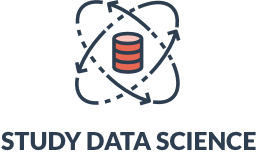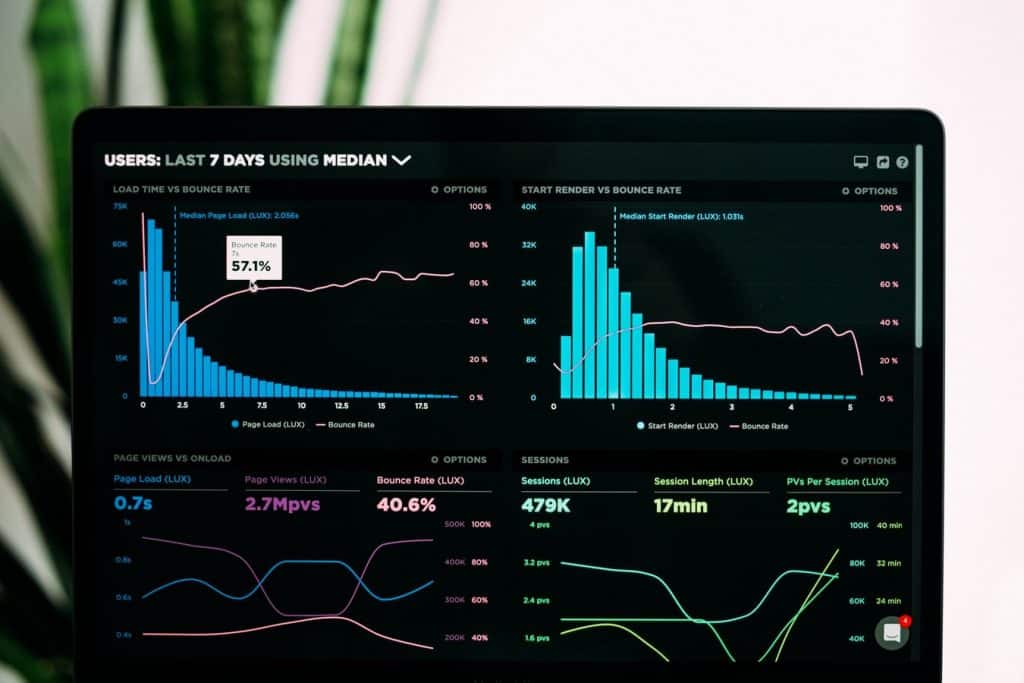How to Become a Data Analyst
Data analytics is a high-paying tech career with a growing market across many industries. Data analytics is one of the most common data science careers. These professionals help businesses make sense of data. As the value of information increases, the data analytics profession will expand. If you’re interested in a highly fulfilling and rewarding career in tech, data analytics may be the path for you. Here’s everything you need to know about a career in data analysis.
These are the essential facts about the data analytics career path, including information from the U.S. Bureau of Labor Statistics and Glassdoor:
Listings
Average Salary
Hiring Companies
What Is Data Analytics?
In a nutshell, data analytics is the process of converting large quantities of data into useful and actionable information. For example, companies collect data on customers who buy certain products. Over time, analysis of that data will help the company determine who buys its products and why. This information, which data analysts find, is useful because it helps companies create better products for target audiences.
What Do Data Analysts Do?
Data analysts help companies use data to make business decisions. These professionals use their analytical skills to transform complex data into information that can be used for market research, customer service, advertising, and more. Data analysts analyze data using computer programs such as algorithms. Data analysts work closely with business analysts as well, using data visualization to make data useful.
Data Analytics Job Description
Data analysts use algorithms to sort, organize, and make sense of data. These professionals also perform business analysis and develop strategies to improve practices. Data analyst job responsibilities vary depending on the employee’s level of experience and the company itself.
Some data analysts also work with project managers to determine the best steps to take along the way. These include utilizing data to identify trends, market opportunities, and target audiences. Business analytics is another related field that focuses specifically on business intelligence, best practices, and identifying areas for improvement.
What Are the Required Skills for Data Analytics Careers?
Data analysts are, by nature, analytical. However, the field involves more than making sense of data—you also have to explain it to people who, most likely, have no experience in the field. Data analysts are equally skilled in programming, analysis, and communication.
How Much Do Data Analysts Make?
Data analysts earn respectable salaries across the board. In many cases, data scientists start off in entry-level data analyst positions and work their way up to higher-paid roles. Nonetheless, it’s entirely possible to have a profitable and satisfying career in data analytics. Here are the average salaries of data analysts across several major American metropolitan areas:
| City | Average Salary | Entry-Level Salary | Mid-Career Salary | Late-Career Salary |
| Atlanta, GA | $60,572 | $42k | $61k | $82k |
| Boston, MA | $66,085 | $46k | $66k | $90k |
| Chicago, IL | $60,672 | $43k | $61k | $83k |
| Cleveland, OH | $58,308 | $41k | $59k | $80k |
| Dallas, TX | $63,103 | $44k | $63k | $86k |
| Los Angeles, CA | $67,105 | $47k | $67k | $91k |
| Miami, FL | $58,452 | $41k | $59k | $80k |
| Milwaukee, WI | $59,551 | $42k | $60k | $81k |
| Minneapolis, MN | $65,567 | $46k | $66k | $89k |
| New York, NY | $66,859 | $47k | $67k | $90k |
| Philadelphia, PA | $60,409 | $42k | $60k | $82k |
| Phoenix, AZ | $59,964 | $42k | $60k | $80k |
| Portland, OR | $65,735 | $46k | $66k | $90k |
| San Francisco, CA | $84,658 | $60k | $85k | $114k |
| Seattle, WA | $66,517 | $44k | $67k | $90k |
Data analytics is a vital and prosperous field of data science. Data analysts earn between $43,000 and $100,000 per year, depending on location, company, and experience.
- Mean Annual Salary: $62,435
- Projected Job Growth Outlook (2018-28): 26%
- Number of People Employed: 109,000
Data analysts use coding languages, frameworks, and data visualization tools to transform large volumes of non-descript data into useful and actionable information.
- Mean Annual Salary: $114,121
- Projected Job Growth Outlook (2018-28): 16%
- Number of People Employed: 31,000
Machine learning engineers use algorithms, engineering principles, and programming languages to build artificial intelligence systems.
- Mean Annual Salary: $124,567
- Projected Job Growth Outlook (2018-28): 16%
- Number of People Employed: 140,000
Data scientists use programming languages, statistical skills, and algorithms to manage and interpret large data sets.
- Mean Annual Salary: $62,435
- Projected Job Growth Outlook (2018-28): 26%
- Number of People Employed: 109,000
Business administration requires a healthy level of analysis. Among all job titles, none serve this need better than business analysts. These professionals solve business problems, and serve the role of ‘trend finders’ within a company.
| Position | Salary |
| Entry Level (0-4 Years) | $43,000 |
| Mid-Career (5-10 Years) | $62,000 |
| Experienced (10-20 Years) | $80,000 |
| Late-Career (20+ Years) | $100,000 |
Experience from a data analyst position is extremely useful when applying for jobs in the future. Many people who take on high-paying data science positions started out as data analysts. Additionally, senior data analysts have the potential to earn a six-figure salary.
The Types of Data Analysts
Data analytics jobs are abundant. Job responsibilities vary among companies. Also, data analyst jobs cover a wide range of activities. In short, there are two main types of analysts in the field: data analysts and business analysts. Here’s the difference between these two career paths:
How Can You Become a Data Analyst?
Data analysts come from a wide range of backgrounds. These professionals often receive specialized training through a university or coding bootcamp. However, some data analysts developed the skills on their own and worked their way into a job. Due to the demand in the market and the flexibility of the tech industry, aspiring data analysts have multiple ways to break into a career.
College or University
The majority of analysts come from colleges and universities. These professionals often intend to (eventually) launch a career in data science. Typically, data analysts enter the field with degrees in statistics, software engineering, and data science where such programs exist.
Coding Bootcamp
Coding bootcamps arose out of necessity, as the tech industry has long faced a dramatic worker shortage. These short-term programs prepare students for a job in tech by covering in-demand coding curriculum. Today, many bootcamps offer deferred tuition and job guarantees.
Coding Bootcamps
Bootcamps strike a balance. While they will not provide the same comprehensive education that a four year degree will, they will provide you with on the ground, practical training to get you into software engineering as quickly as possible. Coding bootcamps cost an average of $13,600 for a full-time education. These programs run between 3 months and 1 year, but schedules vary widely. Full-time programs are available, as are part-time and online programs in all shapes and sizes. Additionally, students can attend bootcamps for other tech careers including web development, data science, cybersecurity, and more. Software engineering is an amazing career. Getting to design entire complex systems that function in unison with other systems like cogs in a giant machine is deeply appealing to many. If it’s appealing to you then don’t wait. Start learning now, and enter a field where cutting edge is the norm.
- Duration: 1 to 5 years
- Cost: $0 (or minimal)
- Average Base Salary: Unknown
- Duration: 3 to 12 months
- Cost: Avg. $13,600
- Average Base Salary: $70,700
- Duration: 4 to 6 years
- Cost: Avg. $34,740 (4 years)
- Average Base Salary: $65,900
- Duration: 1.5 to 2 years (in addition to Bachelor’s Degree)
- Cost: Avg. $30,000 to $100,000 (in addition to Bachelor’s Degree)
- Average Base Salary: $114,000
- Duration: 4 to 8 years (in addition to Bachelor’s Degree)
- Cost: Avg. $50,000+ (in addition to Bachelor’s Degree)
- Average Base Salary: $124,000
FAQ
Will coding bootcamp help me get a job?
Absolutely! Coding bootcamp is a proven way to train for a job in tech. Many coding bootcamps offer job guarantees, and some refund tuition if graduates can’t find a job in the field they trained for. In fact, coding bootcamp teaches skills that many college computer science graduates lack.
How much do coding bootcamps cost?
Coding bootcamp tuition varies. Coding bootcamps in New York City cost around $10,000 to $20,000. However, many scholarships and tuition deferment programs are available, so what you see doesn’t have to be what you pay.
What are income share agreements?
Income share agreements, or ISAs, are a new way to pay for education. These programs defer tuition until after students graduate and find a job in the industry. Once students are employed and making above a certain income threshold (usually $40-60,000 per year) they begin paying a fixed percent of their income, often for around 2 years. If students can’t find a job, many bootcamps waive the cost of tuition.
Do I have to learn coding to work in the tech industry?
You don’t have to learn coding to work in the tech industry. In fact, there are several non-coding bootcamps in New York City. These programs train you for a position in tech sales, marketing, or product management–all of which are well-paid positions with plenty of advancement opportunity.








